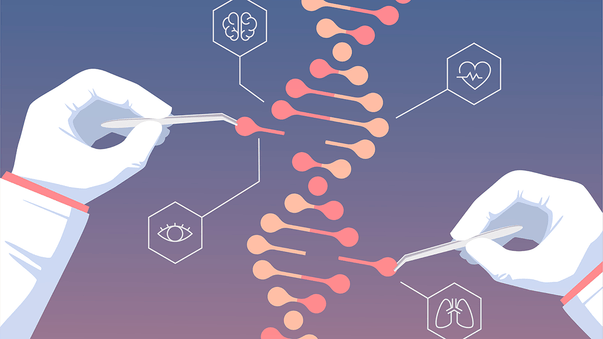Neuralink Brain Interfaces for Artificial Telepathy

In a much hoped and awaited for presentation, which was live-streamed and now is available on YouTube, Elon Musk unveiled his plans for Neuralink.
In a preprint published in bioRxiv, Musk describes the Neuralink technology platform as “an integrated brain-machine interface platform with thousands of channels.” The abstract of the paper characterizes Neuralink as an experimental scalable high-bandwidth Brain-Machine Interface (BMI) system for clinical applications including the restoration of sensory and motor function and the treatment of neurological disorders, but Musk is aiming higher:
“[The] clinical devices that will derive from this platform will be fully implantable ... and have on-board signal compression, reduced power consumption, wireless power transmission, and data telemetry through the skin without percutaneous leads.”
In other words, someday in the near future you could have a Neuralink interface implanted in your brain with a short and painless procedure (like LASIK eye surgery), and become able to stream your thoughts wirelessly to the cloud. Ultimately, Neuralink could make people fully telepathic.
The Nauralink launch event has been covered by nearly all major news outlets, with a lot of hype (of course) but also ferocious criticism (of course). In my opinion, while some enthusiasts are indulging in wishful thinking, some critics are falling into (equally naive) reverse wishful thinking. It seems possible and even plausible that, in a future not as close as enthusiasts hope but not as remote as naysayers think, Neuralink-like technology could find momentous applications, perhaps exceeding Elon Musk’s wildest dreams.
Powerful, safe, and inexpensive oxidation catalysts clean water in minutes. Scientists at Carnegie Mellon University have advanced toward environmentally sustainable chemistry by unveiling powerful, safe, and inexpensive oxidation catalysts inspired by biological processes that break down even the most stubborn micropollutants. In a study published in ACS Catalysis, the scientists report the "record-setting" performances of these improved catalysts, called NewTAMLs (TAML stands for tetra-amido macrocyclic ligands). Testing has shown that infinitesimal amounts of these catalysts activate hydrogen peroxide to eliminate the pharmaceutical and common persistent micropollutant propranolol from water in less than five minutes.
Stealthy delivery system disguises anti-cancer drugs as fat. Researchers at Northwestern University have developed a stealthy new drug-delivery system that disguises chemotherapeutics as fat in order to outsmart, penetrate, and destroy tumors. Thinking the drugs are tasty fats, tumors invite the drug inside. Once there, the targeted drug activates, immediately suppressing tumor growth. As described in a study published in Journal of the American Chemical Society, the researchers used the drug delivery system to carry a common, FDA-approved chemotherapy drug, paclitaxel, into tumors in animals. Disguised as fat, the drug entered and completely eliminated the tumors in three types of cancer: bone, pancreatic, and colon.
Toward human-like brains-on-a-chip. Engineers at RMIT University have mimicked the human brain with an electronic chip that uses light to create and modify memories. The chip, inspired by optogenetics and described in a paper published in Advanced Functional Materials, is based on an ultra-thin material that changes electrical resistance in response to different wavelengths of light, enabling it to mimic the way that neurons work to store and delete information in the brain. According to the engineers, this is an important step toward a bionic brain-on-a-chip that can learn from its environment just like humans do.
Protein promotes efficient repair of DNA. Researchers at Tufts University have found that a transcription factor (transcription factors are proteins that bind to DNA) called Slug contributes to breast cell fitness by promoting efficient repair of DNA damage. In a research paper published in Cell Reports, the scientists show that Slug promotes both stem cell activity and efficient DNA damage repair, and the absence of Slug leads to unresolved DNA damage and accelerated aging of breast cells.
Pet your stress away. Scientists at Washington State University have demonstrated that interacting with cats and dogs produces a significant reduction in cortisol, a major stress hormone. In a study with a sample of college students, published in AERA Open, the scientists report that students who interact directly with pets show significantly less cortisol in their saliva after the interaction.
Double-stranded RNA for skin rejuvenation. Researchers at Johns Hopkins Medicine have discovered that two skin rejuvenation methods - laser treatments and the drug retinoic acid, used to treat acne, wrinkles, and sunspots - share a common molecular pathway. In a research paper published in Nature Communications, the researchers report that the genes involved in sensing double-stranded RNA (dsRNA), and the genes involved in producing the skin's natural retinoic acid, were all expressed at higher levels after the laser treatment. Next, the researchers treated isolated human skin cells with loose dsRNA, mimicking the effect of the laser treatment. The amount of retinoic acid inside the cells increased by more than tenfold.
More Articles
Don't miss a beat! In our Pulse Newsletter, Thrivous curates the most important news on health science and human enhancement, so you can stay informed without wasting time on hype and trivia. It's part of the free Thrivous newsletter. Subscribe now to receive email about human enhancement, nootropics, and geroprotectors, as well as company news and deals.
Read more articles at Thrivous, the human enhancement company. You can browse recent articles in Thrivous Views. See other Pulse Newsletter articles. Or check out an article below.
-
Enhance Physical Performance and Recovery
One day, when I showed up to work at a skilled nursing home, a young college student I work with ...
-
CRISPR Advances in the Lab and Human Trials
The first two news summaries below show, once again, that CRISPR gene editing technology is advancing fast in the lab. ...


